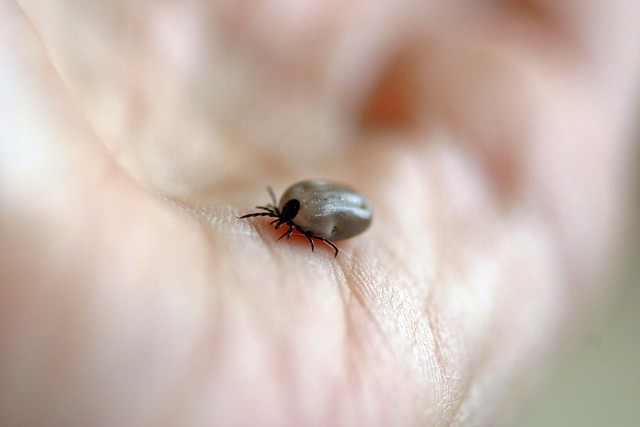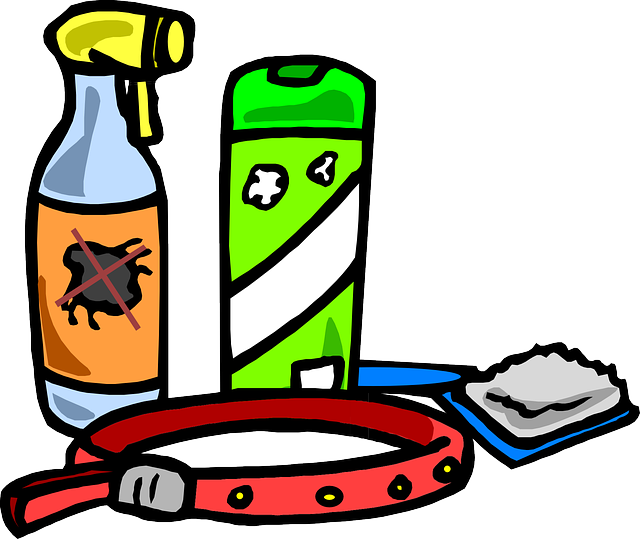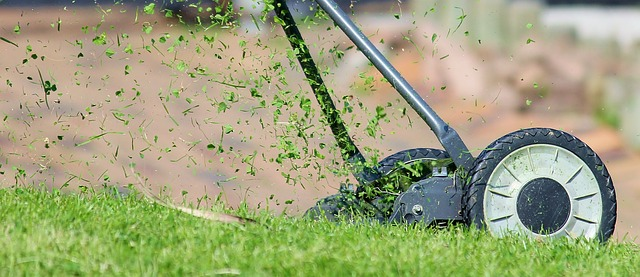Just like a mystery novel that keeps you on the edge of your seat, the world of ticks is packed with surprises. These tiny arachnids are not just “any other bug”; they can be carriers of diseases that can turn your life upside down. But fear not, for this guide on tick control will empower you with the knowledge and strategies to tackle these bloodsuckers head-on.
Short Summary
- Recognize and identify ticks to prevent the transmission of serious illnesses.
- Create a tick control strategy by managing your yard, use natural or chemical methods, create a tick-free border, implement lawn care practices for prevention and treat pets accordingly.
- Hire professional pest control services for guaranteed eradication of ticks.
Recognizing and Identifying Ticks
Picture this: John, a homeowner, notices a small, reddish bump on his arm. He dismisses it as just another mosquito bite. However, over time, the mild itching sensation persists and John starts to feel unwell. What he dismissed as a harmless insect bite turned out to be a tick bite, a vector of Lyme disease. This is a common scenario, as many people, like John, are not aware of the existence of ticks in their yards and the potential diseases these tiny creatures carry.
Ticks are not insects, but arachnids. There are numerous varieties present in the United States, several of which are capable of transmitting illnesses such as Lyme disease and Rocky Mountain spotted fever. Among these varieties are blacklegged ticks and deer ticks, which can be various shades of gray, white, brown, black, or reddish-brown. Adult ticks have flat, oval-shaped, wingless bodies, and their bodies swell and become round after a blood meal. Tick larvae, as well as their physical characteristics and behavior, are key to identify ticks and taking necessary steps to prevent ticks from infesting your yard.
Ticks are usually seen in the Northeast. They like to reside in wooded areas and tall grass, which is their preferred habitat. Tick populations usually attach themselves to small rodents, other animals, and humans for a blood meal. Recognizing a tick bite is crucial for disease control. A small, red bump or welt appears at the site of the tick bite, similar to a mosquito bite, accompanied by localized inflammation and a slight itching sensation. Identifying ticks and taking appropriate measures to control them in your yard is essential to prevent the transmission of serious illnesses.
Tick Habitats and Yard Attraction Factors
Now that John knows the enemy, it’s time to understand their territory. Ticks are attracted to areas that offer ample coverage, shade, and moisture. They thrive in dark and moist environments, with a preference for tall grass, damp soil, and ample shade. As John looks around his yard, he realizes that the tall grass and dense shrubbery provide an excellent habitat for these tiny parasites.
Approximately 75% of tick bites are obtained through regular home activities, including gardening, playing with pets and children, and entertaining guests. Even a well-mowed yard can harbor ticks in the outer areas, where they can take refuge in low-hanging shrubs or ground cover plants. Tick activity tends to be highest from April through September, with nymph activity and the transmission of diseases such as Lyme disease peaking from May through July.
To make his yard less attractive to ticks, John decides to keep it free of tall grass, weeds, and garden debris. He intends to locate outdoor play and entertainment areas in the sunniest and most airy spots. This is to reduce proximity to tick-prone zones. Understanding the environmental factors that attract ticks is the first step towards an effective tick control strategy.
Tick Inspection Techniques
Having understood the tick’s preferred habitats, John equips himself to inspect his yard and his pets for ticks. He learns that one popular method is the tick drag, an inspection technique that helps ascertain whether there is a tick infestation in the yard. He also learns to identify the presence of other organisms that could potentially serve as hosts for ticks, such as small rodents.
John also knows that his pets can be carriers of ticks. One efficient technique to check for ticks on pets is to run one’s fingers through the pet’s coat against the direction it normally lays. John starts checking his dog daily for ticks, and realizes that a tick can be identified by its hard, small mass.
When it comes to humans, it is recommended to wear long-sleeved, light-colored clothing and inspect clothing in a bathtub. With these tick inspection techniques, John feels more confident about identifying and dealing with a potential tick problem.
Natural Tick Control Methods
Wanting to avoid strong chemicals, John explores natural tick control methods. He learns about nematodes, microscopic worms that kill ticks in their larval and nymph stages. He also discovers that certain plants, like lavender and rosemary, can repel ticks, as well as essential oils like cedar, lemongrass, and peppermint. He decides to plant some of these in his garden and prepare a homemade tick repellent with essential oils.
Another useful tool John discovers is Diatomaceous earth, a natural powder made from tiny fossilized aquatic organisms. When ticks come into contact with this powder, it dehydrates and kills them. He sprinkles some of this around his yard, especially in shady, moist areas where he knows ticks love to hang out.
Finally, John looks into tick tubes, which are filled with cotton treated with permethrin. Small rodents take the cotton to their nests, killing ticks in the process. With these natural tick control methods, John can keep his yard tick-free without resorting to heavy chemicals.
Chemical Tick Control Options
Despite his efforts to control ticks naturally, John finds that the tick infestation in his yard is quite severe. He realizes that he may need to resort to chemical tick control options. These options include foggers, permethrin yard sprays, and acaricides. He learns that the two primary tick sprays utilized for residential tick control are permethrin and bifenthrin.
Before using these chemical treatments, John learns that it’s important to wear protective clothing, including a respirator, and ensure that pets and children are not present during application. He also reads the product label thoroughly to ensure that it is suitable for use on the desired surfaces and plants, such as using a cedar oil spray.
While chemical treatments can be effective, John learns about their potential side effects. The use of acaricides can be hazardous and highly toxic, and broad-spectrum pesticides can destroy beneficial insects along with ticks. With this knowledge, John proceeds with chemical tick control methods with caution.
Creating a Tick-Free Border
In his fight against ticks, John learns about another preventive measure: creating a tick-free border. The Centers for Disease Control and Prevention advises maintaining a 3-foot barrier of gravel or wood chips between wooded areas and lawns to impede the migration of ticks into recreational areas. This barrier serves as a visual prompt to take additional precautions when venturing outside the boundary.
John decides to implement this recommendation in his yard. He uses dry wood chips to create a border around his lawn. This not only prevents ticks from entering his lawn, but also adds a neat, manicured look to his yard.
Creating a tick-free border can assist in eradicating existing ticks and obstructing new ones from entering your yard. It acts as a deterrent to animals that might carry ticks into the yard and prevents ticks from finding a hospitable environment in which to thrive.
Lawn Care Practices for Tick Prevention
Regular lawn care practices can also go a long way in preventing ticks. By maintaining grass at a short length and in good condition, John can make his yard less attractive to ticks. He ensures that his grass is regularly mowed and keeps his landscape well-groomed.
John also learns about the importance of keeping his yard clean. He removes any loose brush and cleans up leaf litter and other debris that could provide a suitable habitat for ticks. He also bags up lawn clippings and leaf litter for disposal, further reducing tick habitats in his yard.
By altering his lawn maintenance routine, John can discourage ticks from returning to his yard. These practices, along with creating a tick-free border, provide a comprehensive approach to preventing tick bites.
Treating Pets for Tick Prevention
John knows that his pets can be potential carriers of ticks. Treating pets is critical for deterring ticks from entering the home and spreading illnesses such as Lyme disease. He learns about tick collars, a form of tick treatment that can be effective for up to eight months.
However, he also learns that a tick collar is not enough. He needs to check his pets daily for ticks and use a tick comb to remove any ticks that may have attached to his pets’ fur. He also considers using anti-tick shampoos, which can kill ticks on contact.
John realizes that treating his pets is as important as treating his yard when it comes to preventing tick infestations. By implementing these measures, he can ensure that his pets are not bringing ticks into his home.
Hiring Professional Pest Control Services
Despite his best efforts, John finds that the tick infestation in his yard persists. He decides to enlist the help of a professional pest control service. These services offer tailored tick treatment plans and guaranteed results. They provide interior treatment of homes and installation of pest monitors in key locations.
John learns that a professional pest control company can be a viable solution for serious tick infestations. These professionals have been trained to accurately diagnose and treat tick issues. They use suitable materials for the perimeter of a structure to safeguard it from ticks.
Hiring a professional pest control service is a decision that John does not take lightly. However, he realizes that it might be necessary to ensure the health and safety of his family and pets. After all, a single tick can produce up to 5,000 eggs, making it crucial to eradicate all ticks in the space to ensure the efficacy of tick treatments.
Summary
From recognizing and identifying ticks to exploring natural and chemical tick control methods, we’ve walked through the journey of John, a homeowner grappling with a tick infestation. We’ve understood the environmental factors that attract ticks, learned various tick inspection techniques, and discovered the importance of regular lawn care practices, creating a tick-free border, and treating pets for tick prevention.
By being proactive and knowledgeable, we can win the battle against ticks and prevent them from making our yards their home. Whether you choose to use natural methods, chemical treatments, or hire a professional pest control service, remember: the health and safety of your family and pets is worth every effort.
Frequently Asked Questions
What is the most effective way to repel ticks?
The most effective way to repel ticks is to use EPA-registered insect repellents containing DEET, picaridin, IR3535, Oil of Lemon Eucalyptus (OLE), para-menthane-diol (PMD), or 2-undecanone.
Clothing treated with permethrin can also act as a tick-killing agent.
What is the fastest way to get rid of ticks in your yard?
To quickly rid your yard of ticks, mow long grass and apply a pesticide specifically designed for tick control.
What are the environmental factors that attract ticks to my yard?
Ticks are attracted to shady, moist environments with tall grass and damp soil, making yards with these features particularly attractive.
How can I inspect my yard and pets for ticks?
Run your fingers through your pet’s coat against the direction it normally lays and use a tick drag to inspect your yard for ticks to effectively identify any ticks.
This is an effective way to check for ticks and ensure your pet’s safety.
What are some chemical tick control options?
Chemical tick control options include foggers, permethrin yard sprays, and acaricides, providing effective control of pests.







